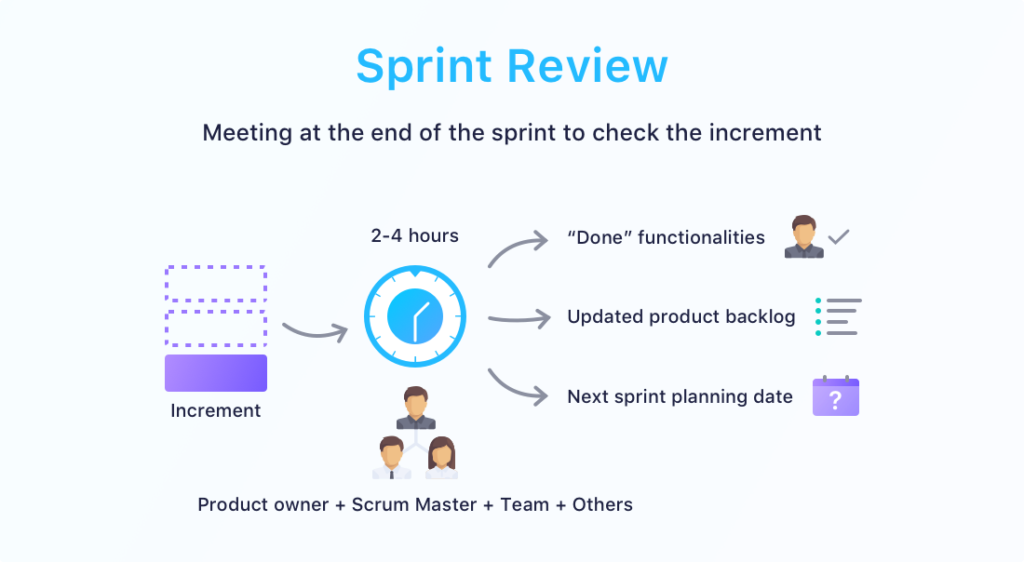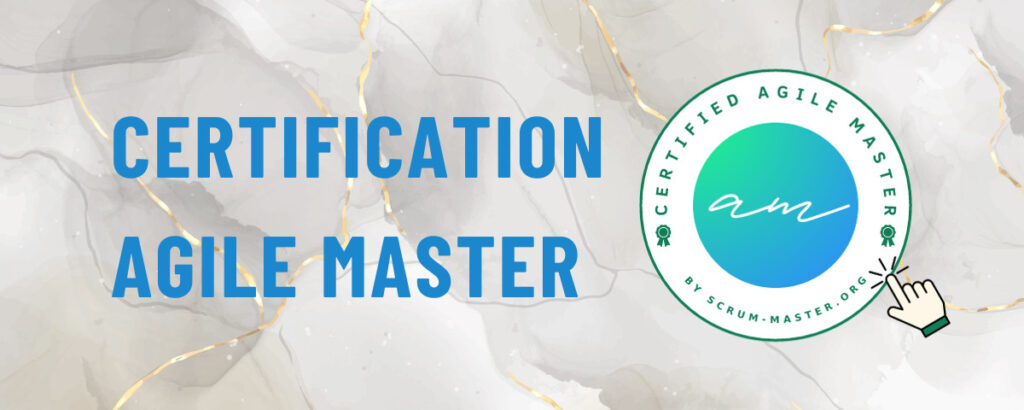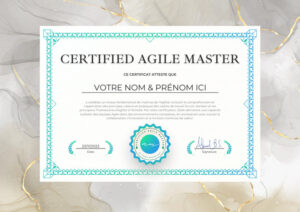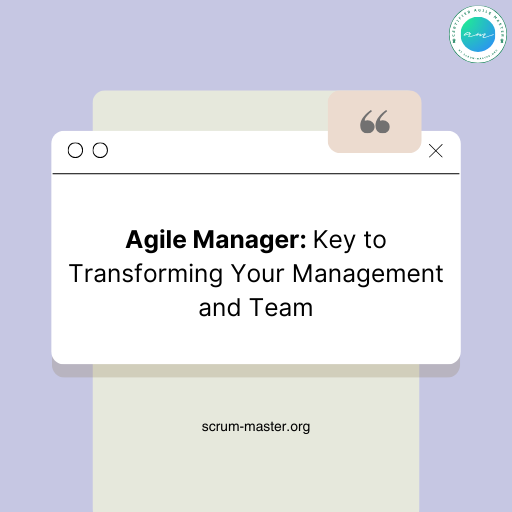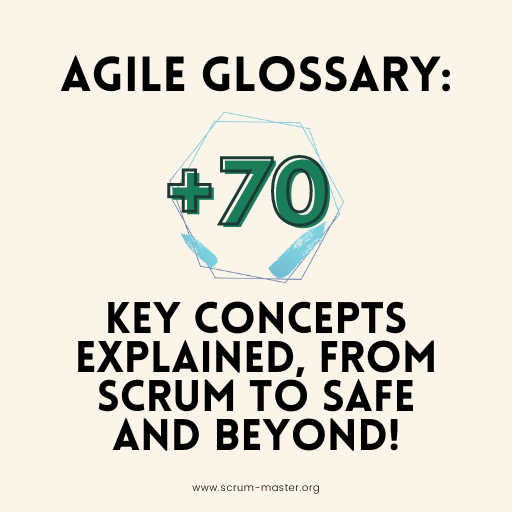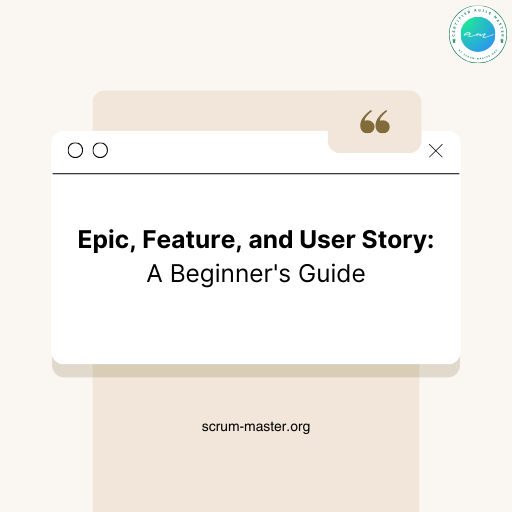Embark on an enlightening journey through the pivotal Scrum Events, the backbone of any successful Agile project. This guide provides an in-depth look at the essential elements of the Sprint, from Sprint Planning to the Daily Scrum, Sprint Review, and Sprint Retrospective. Each event is meticulously broken down to enhance your grasp of the Scrum framework and to empower your team’s collaboration and efficiency.
Discover the purpose, key participants, roles, responsibilities, and optimal durations of these Scrum Events. This guide is your compass for navigating the Scrum landscape, aimed at sparking continuous improvement and fostering maximum value in your product development efforts.
Sprint Planning sets the stage for the Sprint, focusing on defining a clear Sprint Goal and determining which Product Backlog items will be tackled.
Objective:
Formulate a Sprint Goal and curate the Sprint Backlog from selected Product Backlog items.
Participants:
- Essential: Product Owner, Scrum Master, Development Team.
- Optional: Stakeholders for added insights.
Roles and Responsibilities:
- Product Owner: Prioritizes backlog items and clarifies requirements.
- Scrum Master: Facilitates the session and navigates obstacles.
- Development Team: Estimates tasks and commits to the workload.
- Stakeholders: Offer feedback and information as needed.
Recommended Duration:
Up to eight hours for a one-month Sprint, with adjustments for shorter Sprints.
Outcome:
A Sprint Goal with a well-defined set of tasks in the Sprint Backlog, aligning the team’s focus and efforts for the Sprint ahead.

Daily Scrum
The Daily Scrum is a vital, brief meeting for the team to synchronize daily work and address any impediments directly.
Objective:
Enhance team communication, share progress, and spotlight obstacles.
Participants:
- Mandatory: Development Team.
- Recommended: Scrum Master.
- Optional: Product Owner.
Roles and Responsibilities:
- Development Team: Updates on progress, next steps, and impediments.
- Scrum Master: Ensures a streamlined meeting and assists with issues.
- Product Owner: Absorbs updates and offers clarifications if necessary.
Recommended Duration:
15 minutes for focused and effective communication.
Outcome:
An updated team progress, identified challenges, and improved coordination for upcoming tasks.
Dive deeper with our extensive guide on enhancing your Daily Scrum, packed with actionable tips to refine this crucial event.
By understanding and effectively implementing each Scrum Event, teams can significantly boost their Agile practices, ensuring a smoother journey towards project completion and success.

Sprint Review
The Sprint Review is a pivotal event that marks the culmination of each Sprint, dedicated to assessing the achievements and integrating valuable feedback from stakeholders into future planning.
Objective:
The primary aim is to review the Sprint’s deliverables and incorporate stakeholder feedback to refine the Product Backlog, ensuring it remains aligned with user needs and project goals.
Participants:
- Essential: Product Owner, Scrum Master, Development Team.
- Advisable: Stakeholders, providing external perspectives.
Roles and Responsibilities:
- Product Owner: Showcases Sprint achievements and facilitates feedback collection.
- Scrum Master: Leads the session, ensuring a productive exchange of feedback.
- Development Team: Demonstrates completed work, shares insights on challenges and solutions.
- Stakeholders: Offer constructive feedback, influencing future Product Backlog adjustments.
Recommended Duration:
A guideline of four hours for a month-long Sprint, with adjustments for Sprints of different lengths to maintain effectiveness without diminishing engagement.
Outcome of the Event:
This collaborative review results in a Product Backlog that integrates stakeholder feedback, ensuring the upcoming Sprint work is more closely aligned with user expectations and project objectives.
Ultimately, the Sprint Review is crucial for affirming the Sprint’s progress, engaging with stakeholders to gather insights, and adjusting the project trajectory based on real-world feedback. This event fosters a culture of continuous improvement, adaptability, and collaborative growth, key to Agile success.
Sprint retrospective
The Sprint Retrospective stands out as a pivotal event in the Scrum framework, conducted after the Sprint Review. It’s a dedicated time for the team to reflect, adapt, and plan for continuous improvement in their approach to work.
Purpose of the Sprint Retrospective:
This meeting aims to assess the past Sprint’s process, celebrate successes, pinpoint challenges, and identify actionable steps for enhancements in upcoming Sprints.
Participants in the Retrospective:
- Mandatory: Product Owner, Scrum Master, Developers. Each role plays a critical part in the reflective and planning process.
Roles and Responsibilities:
- Product Owner: Provides valuable insights on aligning improvements with the product’s vision and customer needs.
- Scrum Master: Leads the session to foster a constructive dialogue, ensuring a safe environment for feedback.
- Developers: Offer perspectives on what worked, what didn’t, and suggest practical improvements.
Recommended Duration:
For a month-long Sprint, up to three hours are recommended, adjusting for shorter Sprints to ensure a focused and efficient review.
Outcome of the Event:
The retrospective concludes with a consensus on specific improvement actions, committing to implement these strategies in the next Sprint to enhance team dynamics and project outcomes.
The Sprint Retrospective is an invaluable mechanism for Scrum teams, promoting a culture of introspection and proactive adaptation. It empowers teams to methodically address their workflow, collaboration, and project challenges, turning insights into action for tangible improvements. Engaging in regular retrospectives is fundamental to embodying the Agile spirit of growth and optimization. For further insights, especially for remote teams, explore our guide on conducting a successful online Scrum retrospective, ensuring your team remains cohesive and improvement-driven, regardless of location.

Bonus: Backlog Refinement
While not officially classified as a Scrum event by the Scrum Guide, Backlog Refinement plays a crucial role in the Scrum process. It’s an ongoing activity that fosters collaboration among the Scrum team to clarify, prioritize, and ensure the Product Backlog is well-prepared for upcoming Sprints. For a comprehensive understanding, explore our detailed article on Backlog Refinement.
Objective of Backlog Refinement:
The main goal is to refine the Product Backlog so that it is clearly understood, prioritized, and ready for Sprint Planning, ensuring a smooth transition into the next phase of work.
Participants:
- Mandatory: Product Owner, Development Team.
- Recommended: Scrum Master.
- Optional: Stakeholders, offering additional perspectives.
Roles and Responsibilities:
- Product Owner: Leads the refinement by clarifying Backlog items, setting priorities, and responding to queries.
- Scrum Master: Guides the session, addresses any impediments, and ensures a focused discussion.
- Development Team: Engages in estimation, seeks clarifications, and proposes enhancements to the Backlog items.
- Stakeholders: When involved, they contribute further insights and feedback on Backlog items.
Recommended Duration:
While the Scrum Guide doesn’t prescribe a specific timeframe for Backlog Refinement, allocating approximately 10% of the Sprint’s capacity to this activity is advised for effective backlog management.
Expected Outcome:
A refined Product Backlog characterized by clear, prioritized, and estimated items, primed for the ensuing Sprint Planning session.
Regular engagement in Backlog Refinement ensures that the Product Backlog remains a dynamic tool that accurately reflects the project’s evolving needs, thereby reducing uncertainties and enhancing the predictability of deliveries. This practice not only streamlines Sprint Planning but also aligns team efforts towards the most valuable and relevant work items, facilitating a more focused and efficient approach to product development.
Wrapping Up
Additional Resources for Deepening Your Scrum Knowledge
Embarking on the Scrum journey opens up a realm of possibilities for enhancing team dynamics, project management, and product development. To further support your journey, consider diving into these insightful resources:
“Agile Project Management with Scrum” by Alex Campbell: This book serves as a comprehensive guide to boosting team productivity through Scrum methodologies. It covers crucial elements such as roles, events, and artifacts within Scrum, providing practical advice tailored to meet the unique needs of your team and projects. Ideal for those seeking to expand their understanding of agile project management, it offers strategies to refine team operations and achieve peak performance.
“Who Killed My Lovely Scrum Master?!” by ElMehdi Lagnandi: Venture into the intriguing world of agile transformation with this engaging read. Far from being a conventional guide, this book presents a thoughtful exploration of the challenges and constraints faced within organizations, all through an innovative narrative that blends mystery with insightful agile principles. Its unique storytelling approach, coupled with well-crafted characters, enriches the reader’s understanding of agile transformation in a compelling and memorable way.
Both these titles promise not only to enrich your knowledge base but also to inspire new ways of thinking and implementing Scrum practices in your projects. Whether you’re aiming to refine your team’s workflow or seeking a deeper understanding of agile principles, these resources are invaluable additions to your professional library.

